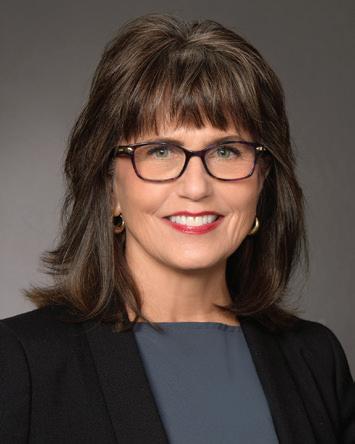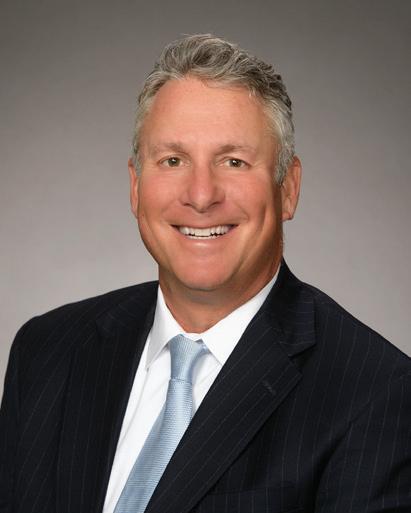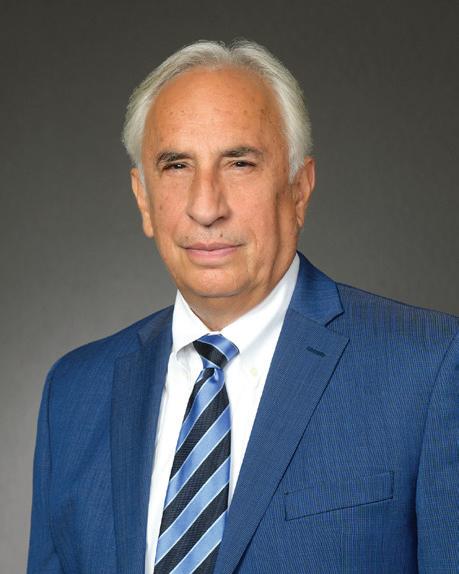
6 minute read
Global Disputes: Lessons for Everyday Mediations and Mediators

By Judge Judy Holzer Hersher, Ret.
Advertisement
Law schools across the country have been holding conferences on geopolitical mediation, opening a window into conflict resolution that impacts thousands of lives and billions of dollars. It is incredibly difficult work done by exceptionally talented individuals and teams. It has been fascinating for me, a veteran trial judge and now mediator, to listen and learn from those who work weeks -- and sometimes months -to keep parties at the table, get past centuries-old stalemates, and reach workable resolutions.1
Importantly, the high-stake stories I heard—Greece and Turkey mediating dominion over islands in the Aegean; Israel and Lebanon arguing over the placement of an oil platform off their coast; China, Vietnam, Taiwan, Malaysia, and the Philippines attempting to resolve concerns over 200-mile ocean economic zones and territorial islands — reaffirm basic mediation principles that help resolve difficult conflicts here at home. And increasingly, parties at any mediation table reflect different cultures, so the lessons learned from these disputes can and do carry over into today’s mediation practice.
Building a Solution Around the Real Problem
The first order of business in international dispute resolution is the same as in any local mediated case, a deep dive into the entire history of the dispute. This involves learning whatever you can prior to the mediation about the parties. It means listening, probing, listening again, and gaining trust so that you understand, from each party’s perspective, what they have gone through, and where the emotional and political minefields lay so that resolution is possible.
International negotiators get their information from sophisticated briefings given by people steeped in the history and culture of the countries at issue. In domestic mediation, mediators get their knowledge and information from a combination of pre-mediation conferences and (hopefully) quality briefs from the parties. These initial briefings between counsel and the mediator are just as important as the high-level briefings in international disputes. And while preparation is very important, neutrals also must be prepared to face social or emotional minefields that no one adequately addressed. Take, for example, a recent case involving a U.S. citizen and a Japanese family. and deciding who should offer them. Compare how you react to the following two apologies: “I am sorry you were injured” or “I take full responsibility for the pain and suffering you have had and continue to experience. I should have been more careful with my words or actions. I will carry that regret and sadness forever and can only hope that you may someday forgive me.” The first regrets the event occurred, while the second reflects personal responsibility. When an apology is essential, it is important to learn and then match the words to the need of the injured party. Resources are available to help hone the craft of apology drafting. 3 The critical issue in the U.S. Naval Officer/Japanese family negotiation was an appropriate apology, and the mediators, if they did not do so, should have determined what was needed to satisfy the family.

World Problems Permeate Local Mediations
into the nature of the current misconduct, the Plaintiff needed me to understand the historical injuries she brought to the table. She needed me to understand where the trust and distrust lay, to acknowledge the cultural context in which the current conflict sat, and how the defendant’s actions had touched that historic contextual nerve. It was also important to know what “words” were important in any resolution that might be reached, and how to creatively build a solution recognizing the cultural differences that were undermining the employment relationship.
The Importance of An Appropriate Apology
A United States Navy officer driving with his family reportedly passed out at the wheel, killing two Japanese citizens. The officer admitted to a criminal charge of negligent driving, paid the family $1.6 million in restitution, and wrote a formal apology. He then was sentenced to several years in prison per Japanese law. The Navy reportedly is seeking an early release of the officer. Efforts to secure the release are stalled, in part, due to the victims’ family’s belief that the apology offered by the Naval officer -- the words chosen -- did not address the gravity of the tragedy he committed.2
While not all parties are willing to apologize in mediation or even find apologies important, others genuinely will. The critical issue is finding the right words to put in an apology given those before you

On the home front, in a recent United States sexual harassment and discrimination mediation case I oversaw, the key party (Plaintiff) and her immediate corporate supervisor (Defendant) were from different African tribes with a long history of conflict. Before getting
In another mediation involving a Chinese exporter and his Chinese American importer, cultural issues and community reputation were embedded in what initially appeared to be a straightforward contract dispute over quality control and compliance with United States Department of Agriculture regulations. It became clear that the allegations themselves implied that one party was dishonest and dishonorable, which if made more public would be devastating to their reputation in both countries with farmers and businesses. The mediated approach had to avoid insults and sullied reputation while working toward a solution.

Expect, Embrace, and Work Through Stalemate

Stalemates are frustrating for everyone everywhere. And nowhere are stalemates more prevalent than in international negotiations where the backdrop is hate, torture, and death.
Thousands of ongoing mediation efforts in Rwanda are a good example of mediating through pain and getting beyond stalemate. Beginning in 1994, over 800,000 Tutsi tribal members were massacred after three decades of ethnic tension with another tribe, the Hutu. After local courts tried the criminal cases, traditional local abunzi or mediation committees addressed the claims of victims and their families. These mediators skillfully, and from time to time with face-to-face discussions between the perpetrator and the victim, have been finding ways to move past stalemate and rebuild community. The emphasis has been on restoration of broken relationships, looking to the future, restitution, and forgiveness. The sessions often included family, clan, or community mem- bers in deference to local culture. 4
Each country involved in international mediation and, by analogy, each party in local mediation has its list of goals and goal approaches to settle any dispute. Mediator skill comes into play in fleshing out the unstated goals and keeping the parties at the table, despite seemingly unresolvable conflicts. Importantly, if there is a cultural element in the room — be it tribal, historical, business, corporate, or personal -it must be acknowledged and addressed before movement beyond stalemate can occur.
Trust in the mediator, built up from the beginning of the process, is the essential ingredient to help parties verbalize, then visualize and achieve their ends. Parties need to trust that their neutral’s understanding of both the stated and unstated goals is insightful, credible, and genuine.
Parties may express that they “feel” their side is not being heard, that they are being unfairly leaned on, or are being constantly asked to reevaluate their position without understanding what the me- diator is doing in the other room. These perceptions are just as real as the facts of the dispute. As frustrations mount, pulling the parties back from the brink of ending talks is accomplished by reinforcing the belief that you believe the process is working, that there is an opportunity for progress, perhaps asking, “What would it take for you to feel heard or fairly treated to accomplish an agreement?”
Even in local disputes, the parties may have differences in culture, race, gender, age, language, and social status that present the same hidden barriers to resolution as in international disputes. The key is to listen to the parties with sensitivity as to how they experience the dispute and bring that knowledge to the resolution table. Conflict and stalemate are part of the process, as are pauses and timeouts. These should not be viewed as failures. Expect, embrace, and patiently work through them. It may take more than one session. Be the trusted voice that rises above the discord.
1 See e.g., the newly updated International Dispute Settlement, 7th ed., by authors J.G. Merrills and Eric De Brabandere, (2022), published by Cambridge Press. It covers both legal and diplomatic ways to solve international disputes, including negotiation, mediation, inquiry, and conciliation, along with arbitration, and provides examples of each method.
2 See the February 23, 2023, New York Times article titled, “Navy Officer’s Sentence Complicates Diplomacy Between the U.S. and Japan.” The status of the negotiation is unknown at the time of publishing this article.
3 See, e.g., author Peter Rufo Robinson’s, Apology, Forgiveness, and Reconciliation, copyright 2019, ISBN: 978-0-692-9137-0. These and other examples of apology writing are included in various sections.
4 The word abunzi means “those who reconcile.” The abunzi are local mediators who are mandated by the state to reach mutually acceptable solutions. They number about 30,000. See Martha Mutisi, ACCORD Policy and Practice Brief, Oct. 2011, The Abunzi Mediation in Rwanda, Opportunities for Engaging with Traditional Institutions of Conflict Resolution, Issue No. 12, Oct. 2011.













It’s a regular Wednesday for Eastern District of California, Federal Judge Troy Nunley. After hearing arguments from the bench, he heads over to Lincoln Law School where dozens of second-year law students eagerly await his arrival. Since 2007, Judge Nunley has been a law professor teaching Business Associations and Corporations to the next generation of legal practitioners. He thoroughly enjoys teaching and mentoring.
Judge Nunley is a beloved member of the Sacramento community. A father of four, husband, mentor, and role model to members of both the bench and the bar, one must wonder where he draws his seemingly endless source of positive energy and patience. Those who come to know him are inspired by his consistency,






